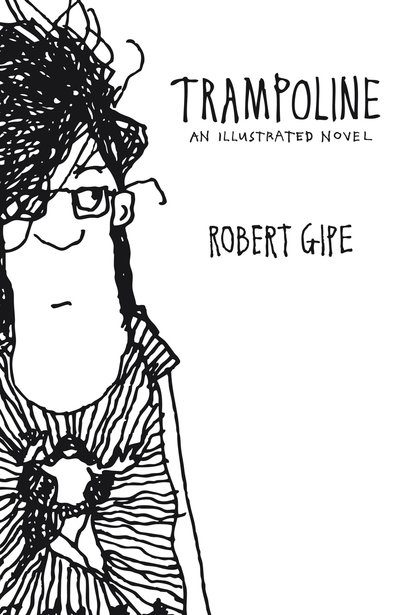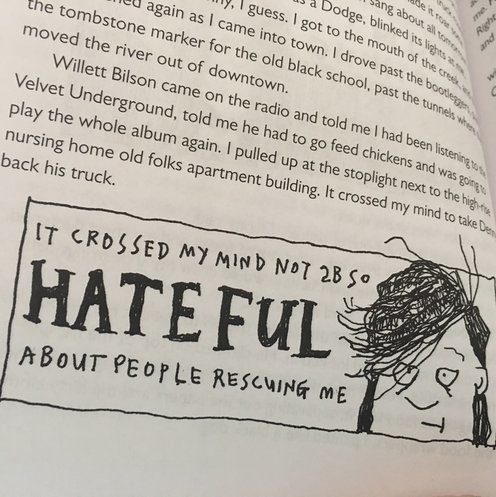As a high school ELA teacher, finding the right books for my students is not only an essential part of effective instruction, but it’s critical in building good classroom culture and growing good people. I want to make sure that my classroom library and my syllabus reflect the rich diversity of my classroom population. But as a West Virginia educator, sometimes this is hard. In the last few years there has been an explosion of YA lit that features a myriad of diverse characters, races, and voices. But there seems to be a void in YA literature when it comes reflecting the unique stories of the young people of Appalachia. This past year’s NCTE Convention was themed around advocacy, and the opening panel featured several YA authors who write books that primarily feature protagonists from marginalized groups. The panel was incredible and moved me to tears, but at the same time, I couldn’t help but think, “Where is the representation for our young people in Appalachia? There is a whole group of young people who feel marginalized and who are not represented on this stage.”
More recently I attended and presented at the 40th annual Appalachian Studies Conference in Blacksburg, Va with a 13 of my Advanced Placement Language and Composition students. You can read about the incredible panel presentation we put together on this blog next week.
Before our presentation, my students and I were invited to participate in a round table discussion about youth and activism in Appalachia alongside award winning author, Robert Gipe. It was here that I was first introduced to his incredible book, Trampoline.

Trampoline is the story of 15 year old Dawn, who becomes immersed in her grandmother’s controversial fight against mountain top removal in their east Kentucky community. During our round table presentation together, the more Robert talked about Trampoline, the more I began to realize that this just may be the type of book many of our young people in Appalachia are looking for. I left the session, went straight to the convention hall and bought a copy of Trampoline. I spend the following Tuesday happily snowed in curled around this gritty, beautiful, heart-wrenching book.As a teaching resource, Trampoline is rich with material. An illustrated novel, Gipe uses his stark black and white illustrations to provide us with further insight into the protagonist in much the same way Sherman Alexie uses Junior’s cartoons inThe Absolutely True Diary of a Part-Time Indian.

The similarities don’t end there. Just as Junior is forced to leave his reservation to save himself and becomes viewed as a “traitor” by most of his tribe, Dawn’s stance on mountain top removal makes her pariah to many in her mountain community.
However, Gipe’s prose sets him apart from Alexie in that Dawn’s voice is as mature, as rich, as powerful, and as resonate as the mountains themselves. And while Alexie’s book is clearly written for a young adult audience, I wouldn’t necessarily classify Trampoline as YA lit.
Trampoline is 312 pages long, a bit long for a middle school or freshman audience, and contains adult language and content. It would probably be best received in upper level high school classrooms, and/or perhaps excerpted for lower grades.
But Dawn’s story itself is one that will resonate with audiences of all ages for many reasons. Her coming of age struggle in the book is a universal one, but what makes this book important is that her story is a uniquely Appalachian one. She’s a character who many of our students in central and southern West Virginia will immediately recognize as themselves. She wants to escape and at the same time she doesn’t. She knows why we need coal, but she also knows what it’s doing to her world.
One of my favorite excerpts in the book is in reference to these contradictions she faces. Dawn says:
“Those coal miners who had been so good to me, who had loved me through my tree-hugging ways, needed the mountains and the woods more than any of us. They loved it here, and they had to tear it up to stay. The full hard hardness of their lot came down on me that winter night, and I knew maybe not them but other coal-mining people would be mad at me, would hate me, but after that night, I never was mad at them, not the ones who lived here with me, not the ones taking their sorrow and joy from what was left of these trees, these rocks, these rustling waters” (226).
She loves the mountains and the people in them, but they seem to be trying to destroy her. She knows the coal miners in her community love the mountains, but they are tearing it apart. Just like West Virginia and Appalachia, Dawn and her community are full of paradoxes.

Her story is gripping, heart-breaking, and raw, and Gipe’s prose and illustrations show us this story though a powerful young voice—a character unafraid to be different, to be brave, to be strong. So often in Appalachia our young people hear a single story about who they are. Dawn rejects this. Much like the mountain landscape around her, she is powerful, wild, and authentic.
I will be adding this book to my AP English 11 Summer Reading assignment this year, and I recommend every teacher in West Virginia who is struggling to find a book that your students see themselves in, check out Trampoline.
If you’re interested in using Trampoline in your classroom, you can read the first Three Acts online in the literary and art journal, Still: the Journal. Click HERE to go straight there.
And if you had been thinking that maybe it seemed like the mountains were empty of stories for and about our young people…
well, I’ll let Dawn take this one…
